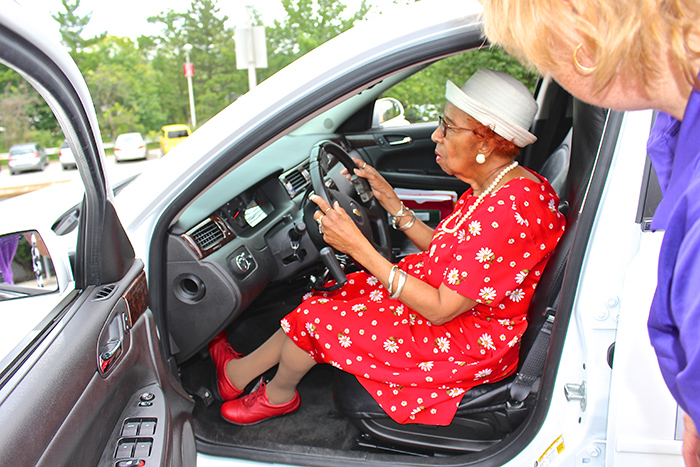Finding innovative approaches to support productive aging

Productive aging is a key practice area for occupational therapy. Our society's rapidly aging population and increased longevity, the changing world of work, and baby boomers' focus on quality-of-life issues are some factors that will increase the demand for you to have innovative approaches for services in this area. Occupational therapy’s distinct value is to improve health and quality of life through facilitating participation and engagement in occupations - the meaningful, necessary, and familiar activities of everyday life. Occupational therapy takes a holistic approach to identify strategies that will support older adults to continue to engage in meaningful occupations.
Explore productive aging resources
Resources shared in the following sections address common issues faced when working with older adults. We hope the resources below will help guide and inform you about the practice of occupational therapy to support productive aging. If you have additional questions and are an AOTA member, try posting them on CommunOT, a community where occupational therapy practitioners just like you share knowledge and experiences.
Driving & community mobility
Occupational therapy practitioners have the science-based knowledge to understand the toll that progressive conditions and life changes can take on the complex task of driving. Understanding the role that driving plays in everyday life, occupational therapy practitioners help individuals make a smoother transition from driving to using other forms of transportation. In doing so, they help people maintain their autonomy, independence, and sense of worth, and continued access to community activities.

Falls prevention
Despite being a common issue with older adults, most falls are preventable, and occupational therapy plays a prominent role in prevention. The cause of most falls is a complex interaction of multiple factors. While strength and balance may be contributory, routines, environments, and activities must also be considered. Occupational therapy practitioners provide comprehensive assessment, training, and support to help older adults remain injury-free.
Home modifications
Aging in place strategies focus on enhancing the safety and quality of life for older adults in their home environment while allowing participation in valued activities. Occupational therapy provides tools to allow older adults to stay in their homes as they age by supporting the necessary modifications to do so. A recent addition to the Center for Disease Control's falls algorithm [Stopping Elderly Accidents, Deaths, and Injuries (STEADI)] recognizes occupational therapy's critical role in the success of programs addressing home hazards for older adults. This recognition is likewise reflected in the Department of Housing and Urban Development (HUD) Older Adult Home Modification programs (OAHMP) that required funded projects to incorporate occupational therapy into the team approach to enhance homes. This section provides a variety of resources about occupational therapy practice and home modifications.
Alzheimer's & dementia
Alzheimer's disease and related dementia (ADRD) is a progressive disease that increasingly reduces the person’s cognitive skills and ability to function with daily activities. Occupational therapy practitioners work not only with people with dementia but also with their caregivers and family members. Their focus on the person’s remaining abilities, and adaptations and modifications to maintain participation for as long as possible, make them valuable members of the care team. By allowing for successful participation in activities, challenging behavior is also minimized.

Low vision
Many older adults experience age-related vision changes that cannot be corrected with eyeglasses, contact lenses, or surgery. Occupational therapy practitioners help people with low vision function at the highest possible level by preventing accidents and injury (e.g., improving lighting), teaching new skills (e.g., eccentric viewing, visual tracking), modifying the task or environment (e.g., recommending magnifiers), and promoting a healthy lifestyle (e.g., ensuring they can participate in their daily activities).